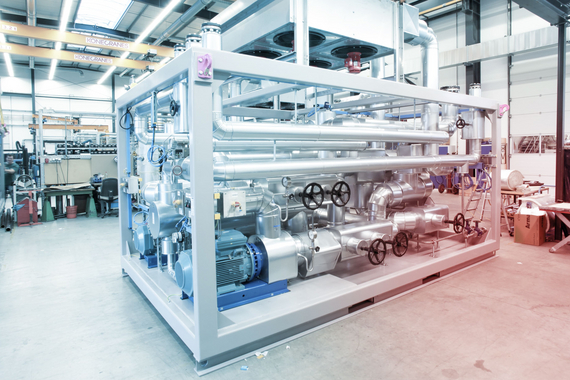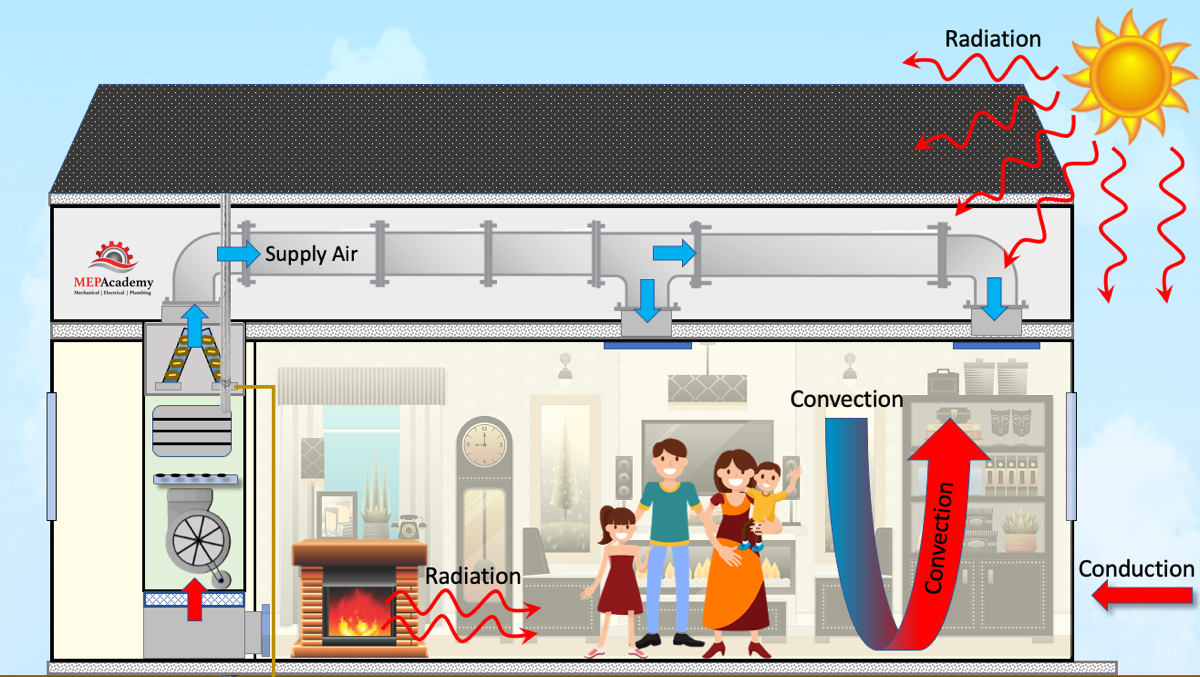5 Smart Strategies DVS Heat Transfer Systems Improve Energy Management in Electronics
Discovering the Benefits and Applications of Heat Transfer Systems in Modern Sector
Heat transfer systems play a crucial duty in contemporary sector. They encompass different systems such as conduction, radiation, and convection, each adding to effective thermal monitoring. Industries like production and aerospace benefit greatly from these systems. As improvements proceed, the assimilation of innovative products and technologies assures to improve power performance. This development elevates important inquiries concerning the future implications for sustainability and operational costs across several fields. What lies in advance in this ongoing transformation?
Understanding Heat Transfer Principles
Heat transfer principles are basic to the operation of numerous industrial systems. These principles encompass the mechanisms of convection, transmission, and radiation, each playing an essential role in taking care of thermal power. Recognizing conduction entails assessing how Heat moves with strong products, while convection relate to Heat transfer in fluids, driven by liquid motion. Radiation, distinctive from the various other 2, includes energy transfer via electromagnetic waves. The performance of Heat transfer influences system efficiency, energy intake, and general performance. Reliable thermal administration is important in procedures such as cooling, home heating, and Heat recovery. By grasping these principles, industries can maximize their operations, lower power costs, and improve devices longevity, thereby contributing to a more sustainable and effective commercial landscape.
Trick Sorts Of Heat Transfer Solutions
While numerous industries utilize Heat transfer systems for varied applications, a number of crucial types stand apart because of their certain functions and efficiencies. The most common types include convection, radiation, and conduction systems. Transmission systems transfer Heat through straight call in between materials, making them efficient in solid-state applications. Convection systems, on the various other hand, utilize liquid activity to move Heat, suitable for home heating or cooling down gases and liquids. Radiation systems operate without a medium, counting on electromagnetic waves to move Heat, ideal for high-temperature atmospheres. Each kind offers distinctive objectives, enabling sectors to tailor their Heat transfer solutions based upon operational requirements, energy efficiency, and cost-effectiveness. Comprehending these systems is essential for optimizing efficiency in different industrial setups.
Industrial Applications of Heat Transfer Technologies
The application of Heat transfer technologies in industry plays a crucial role in enhancing power performance and optimizing procedures. DVS Heat Transfer Systems. By applying advanced Heat exchange systems, companies can significantly minimize their environmental effect while enhancing general productivity. This combination not only fosters sustainability however also straightens with modern-day governing and consumer demands for greener practices
Power Performance Improvements
As markets progressively focus on sustainability, energy effectiveness renovations in Heat transfer modern technologies have come to be necessary for reducing functional expenses and ecological effect. Enhanced Heat exchangers, as an example, utilize advanced materials and styles to maximize thermal performance while decreasing energy intake. In addition, integrating variable speed drives in pumping systems permits better control of liquid flow, causing substantial power cost savings. The execution of clever sensing units and automation gives real-time monitoring, allowing changes that optimize energy usage. In addition, waste Heat healing systems catch excess thermal power, converting it right into useful power. These advancements not only improve power performance but also add to a more sustainable industrial landscape by decreasing greenhouse gas exhausts and supporting compliance with environmental policies.
Refine Optimization Techniques
Refine optimization methods are crucial in enhancing the effectiveness and effectiveness of Heat transfer innovations in commercial applications. These strategies involve refining processes to optimize Heat transfer performance while decreasing power consumption and functional expenses. Techniques such as computational fluid characteristics (CFD) modeling permit engineers to examine and imitate Heat transfer situations, identifying locations for improvement. Additionally, real-time surveillance systems can give useful information on temperature level slopes and flow rates, making it possible for changes that optimize performance. Implementing sophisticated control methods, such as predictive analytics, can boost system responsiveness to differing functional demands. By applying these optimization methods, sectors can achieve greater thermal effectiveness, decreased downtime, and enhanced product quality, eventually resulting in increased competitiveness in the market.

Environmental Impact Decrease
While commercial Heat transfer technologies are essential for operational performance, their application also provides opportunities for significant environmental influence decrease. By enhancing energy performance, these systems lessen fuel intake, leading to reduced greenhouse gas emissions. For circumstances, advanced Heat exchangers can recoup waste Heat, redirecting it to preheat incoming fluids, consequently reducing power requirements. On top of that, the assimilation of Heat transfer modern technologies in sustainable power systems, such as solar thermal and geothermal applications, sustains the shift to sustainable methods. Industries that use these technologies likewise profit from lowered operational expenses and improved regulatory compliance. In general, the strategic implementation of Heat transfer systems not just over here boosts productivity but likewise promotes an extra lasting commercial landscape, adding to worldwide environmental objectives.
Advantages of Efficient Heat Transfer Equipments
Effective Heat transfer systems provide considerable advantages in modern sector, primarily through boosted power performance and expense decrease. By maximizing thermal management, these systems decrease power waste, resulting in reduced operational costs (DVS Heat Transfer Systems). Companies can achieve greater sustainability and improved productivity.

Energy Performance Improvements
As sectors progressively focus on sustainability and cost-effectiveness, power performance improvements in Heat transfer systems have become an important emphasis. Boosted performance in these systems leads to reduced energy consumption, enabling facilities to operate even more sustainably. By maximizing Heat transfer approaches, sectors can decrease waste Heat and accomplish much better thermal administration, considerably lowering their ecological effect. Advancements in technologies such as Heat exchangers and insulation products add to enhanced performance and reliability. Furthermore, implementing energy-efficient Heat transfer remedies not only sustains compliance with governing standards however likewise fosters a society of technology within companies. Inevitably, these enhancements are important in lining up industrial operations with worldwide energy preservation goals, leading the way for a more lasting future in manufacturing and handling markets.
Expense Reduction Opportunities
By maximizing Heat transfer systems, sectors can reveal significant expense reduction chances that enhance their bottom line. Reliable Heat transfer minimizes energy consumption, bring about lower utility bills and minimizing functional expenditures. Additionally, boosted system performance lowers the need for repair and maintenance, in addition saving prices over time. Improved Heat transfer can also prolong tools lifespan, permitting business to postpone capital investment on replacements. In addition, waste Heat healing systems can transform excess Heat right into usable power, additionally driving down prices. These systems not only enhance procedures but also add to sustainability campaigns, placing companies favorably in an increasingly eco-conscious market. On the whole, the financial benefits of efficient Heat transfer systems are considerable and necessary for competitive advantage.
Developments in Heat Transfer Solutions
Exactly how can contemporary sector improve its operations through innovative Heat transfer options? By taking on innovative products and modern technologies, sectors can greatly improve thermal efficiency and efficiency. Technologies such as nanofluids, which boost Heat transfer capabilities past standard liquids, and stage modification materials that store and release thermal energy, are acquiring traction. Additionally, the assimilation of clever sensors and IoT devices allows for real-time surveillance and optimization of Heat go to these guys transfer procedures, lowering waste and improving system responsiveness. Additive manufacturing techniques make it possible for the development of more intricate Heat exchangers that take full advantage of surface area while decreasing product usage. Jointly, these developments drive operational efficiency and produce competitive benefits in numerous fields, consisting of power, manufacturing, and aerospace.
The Duty of Heat Transfer in Sustainability Efforts
While the press for sustainability proceeds to improve sectors, the role of Heat transfer technologies becomes increasingly crucial in accomplishing ecological goals. Reliable Heat transfer systems assist in energy effectiveness by optimizing thermal management in numerous procedures, significantly reducing energy intake and greenhouse gas emissions. For example, progressed Heat exchangers are used in commercial applications to recover waste Heat, thus lessening power waste. Additionally, technologies such as phase modification products boost thermal storage space, adding to renewable resource assimilation. The adoption of sustainable fluids in Heat transfer systems can minimize ecological influence. By sites focusing on reliable Heat transfer, sectors not only improve operational performance however likewise line up with global sustainability efforts, fostering a cleaner, more sustainable future.
Frequently Asked Questions
Exactly How Do Heat Transfer Solutions Influence Power Prices in Production?
Heat transfer systems considerably affect energy costs in manufacturing by enhancing efficiency, decreasing waste, and optimizing thermal management. These improvements bring about decrease functional costs, inevitably benefiting general productivity and profitability in commercial operations.
What Upkeep Is Required for Heat Transfer Equipments?
Upkeep for Heat transfer systems includes regular assessments, cleaning of components, checking liquid degrees and conditions, changing worn parts, and making certain proper insulation. These actions enhance efficiency, expand lifespan, and stop expensive failures in operation.
Exist Security Issues With Heat Transfer Solutions?
Safety and security problems with Heat transfer systems consist of prospective leakages, pressure build-up, and thermal risks. Appropriate design, routine maintenance, and adherence to safety and security procedures are necessary to minimize these dangers and assure safe operation in commercial settings.
Exactly How Can I Select the Right Heat Transfer System for My Organization?
Choosing the appropriate Heat transfer system entails evaluating factors such as effectiveness, application requirements, budget plan restraints, and safety standards. A thorough analysis of these aspects will assist assure ideal performance and reliability in company procedures.
What Prevail Failings in Heat Transfer Systems and Their Reasons?

Comprehending conduction includes examining just how Heat moves with strong materials, while convection pertains to Heat transfer in fluids, driven by liquid movement. By optimizing Heat transfer approaches, markets can decrease waste Heat and accomplish far better thermal monitoring, significantly lowering their ecological impact. Waste Heat recovery systems can change excess Heat into useful energy, even more driving down prices. Progressed Heat exchangers are used in commercial applications to redeem waste Heat, therefore reducing energy waste. Typical failings in Heat transfer systems consist of leakages, deterioration, and ineffective Heat exchange.